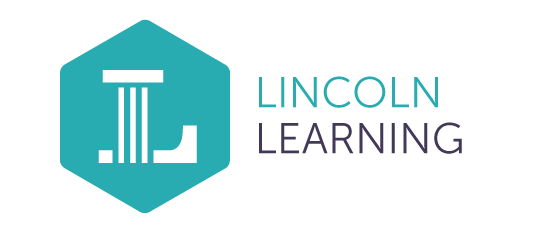High-impact tutoring has proven to be an effective strategy for increasing student learning; however, online learners pose unique challenges to implementing such instruction in a virtual educational environment.
What is High-Impact Tutoring?
When you think of what tutoring looks like, you may picture a struggling student meeting with other groups of struggling students to receive weekly assistance from a peer or untrained tutor. Students may complete worksheets or participate in educational computer programs. This type of tutoring is indicative of the typical tutoring construct: reactive, optional, and outside-of-classroom instruction.
High-impact tutoring is completely different. Using a qualified tutor, all students meet at no more than a 1:4 ratio during the school day to strengthen their existing skills while connecting what is currently being taught in the curriculum. Meeting daily, or at least three times a week, allows for a student-mentor relationship to grow.
Driven by data, high-impact tutoring allows for the personalization of content given to each student during tutoring sessions. This type of tutoring is proactive, differentiated, and oriented to students’ strengths and needs (High-Dosage Tutoring: A Proven Strategy to Accelerate Student Learning, 20211).
Traditional high-impact tutoring improves students’ scores across subject areas, but applying the practice with online learners can be a challenge (Sawchuck, 20202). Consider the following factors when beginning to build your online tutoring program.
Choosing a Platform
Delivering high-impact tutoring online starts with choosing a delivery method that encourages thoughtful engagement. What platform will work best?
If selecting a free-standing meeting platform or video conferencing technology, such as Zoom or Microsoft Teams, be sure it has the following capabilities:
- Screensharing with sound
- Camera and microphone integrations
- Chat feature
- Interactive whiteboards
Features such as surveys, polls, quizzes, awards, persistent meeting rooms, and the ability for screen control can also help to create an engaging student experience.
If using a learning management system (LMS), look for one with an integrated meeting platform. An LMS may allow educators to assign specific materials to individual students or groups, bringing a new level of personalization and differentiation to student learning.
Instructing a Diverse Population
Because high-impact tutoring is driven by formative assessment data, qualified tutors need to be prepared for the knowledge gaps that can be found within tutoring groups (Office of the State Superintendent of Education, 20211). The challenge lies with how to meet the diverse needs of online learners.
Flexibility and adaptability are essential for a tutor to lead learners down their own unique paths. Consider accessibility to technology. Be prepared to pivot considering our ever-changing environment and be aware of each learner’s familiarity with technology at large.
Communication is also vital. Tutors and teachers must work together to provide the correct instruction to build students’ confidence while challenging them with new skills and concepts. To provide timely and tailored instruction, teachers and school administrators need to make tutors aware of the following and more:
- IEPs
- GIEPs
- 504s
Building the ever-important mentor-student connection also hinges on successful communication. But the trick here is in generating personal interaction in an online learning environment. This is where a tutor’s ability to engage with a variety of students and foster meaningful relationships is so important to high-impact online tutoring (High-Dosage Tutoring: A Proven Strategy to Accelerate Student Learning, 20211).

Providing High-Quality Instructional Materials
Access to a wide variety of educational resources is crucial to a successful high-impact tutoring program (Office of the State Superintendent of Education, 20211). Consider researching and vetting accredited and certified online curriculum and content providers to create a top-notch tutoring program.
Ask yourself the following questions:
- Do I want pre-packaged modules or lessons of learning?
- Do I need access to print materials?
- Do I like single activities that can be completed online only?
- Do I want my students to turn in their work online?
Depending on your answers, you may find fully customizable online courses are best. Alternatively, the purchase of a learning object repository or learning activities catalog may be your ticket.
Whatever you choose, be sure the content addresses the following:
- Different learning modalities
- Meeting platform or LMS integration
- Materials needed
Taking the time to ensure tutors have the right resources at their fingertips is key to providing a quality high-impact tutoring program meeting the unique needs of every virtual learner. Find instructional materials that provide a high-quality learning experience in your chosen platform. Your due diligence will guarantee program success for your online learners.
Funding a Successful Program
High-impact tutoring is not cheap, so how can you find funding for a program that sustains student growth and achievement? It’s estimated a district must spend between $1,200 and $2,500 per student each year to provide effective high-impact tutoring (DeMio, 2024). The high price tag is warranted given the extensive education and training of qualified tutors, purchasing and licensing costs associated with an online delivery system and procurement of high-quality instructional materials.

The benefits of high-impact tutoring are evident, and some countries are supporting it as a strategy for student success. In the US, COVID-19 relief funds have provided academic support and relief to districts, which could be allocated for tutoring needs with certain stipulations. As these funds are ending, it is crucial to look ahead at potential future resources. The US Department of Education requested additional funds in their 2025 fiscal year budget summary request. If approved, this proposal will grant states and school districts extra resources to meet the critical academic needs of their students, with a particular focus on high-impact tutoring (Fiscal Year 2025 Budget Summary). Additionally, ESEA Title I and Title II grants could be used to serve students and teachers, respectively. However, districts receiving these funds will need to make a concerted effort to allocate them toward high-impact tutoring programs and training to be effective.
Launched in July 2023, the National Partnership for Student Success was established to supply 250,000 qualified tutors and mentors for high-impact tutoring over the next three years. However, the White House, in connection with AmeriCorps and Johns Hopkins Everyone Graduates Center, has not marketed this program to states, leaving many districts unaware of vital resources accessible to them (Office of the State Superintendent of Education, 20211).
However, some studies have shown there may be a more cost-effective way to provide a successful high-impact tutoring program. Paid volunteers and paraprofessionals can be just as good and less costly than hiring paid, trained tutors. AmeriCorps has long supported tutoring as a community service with volunteers receiving a stipend (Sawchuck, 2020).
Professionally trained college students can also be of value. Seeing the potential, U.S. Secretary of Education Miguel Cardona encourages districts, colleges, and universities to work together to use federal work-study funds to train students for these tutoring roles (DeMio, 2024). College students would also be beneficial for online tutoring due to their familiarity with and early adoption of technology and its many advances.
Putting the Pieces Together
While the research is ongoing for online high-impact tutoring, studies from Botswana, Italy, and the United States have shown gains in student learning (Schueler, 2022). Effectiveness may be attributed to the rise of online learners and their ability to create virtual, yet personal, connections (Sparks, 2023). Districts need to take advantage of these skills developed by online learners while providing them and tutors with the resources to make high-impact tutoring worthwhile. Districts should investigate partnering with paid volunteers and higher education institutions to train tutors in a more cost-effective way. Providing tutors with additional training opportunities to communicate with and educate diverse student groups can also prove useful. Finally, giving both students and tutors access to digital learning platforms and high-quality teaching materials can only improve program implementation and student growth.
Contact us for more information and possible professional learning opportunities on how to implement a successful high-impact tutoring program in your district/school.


